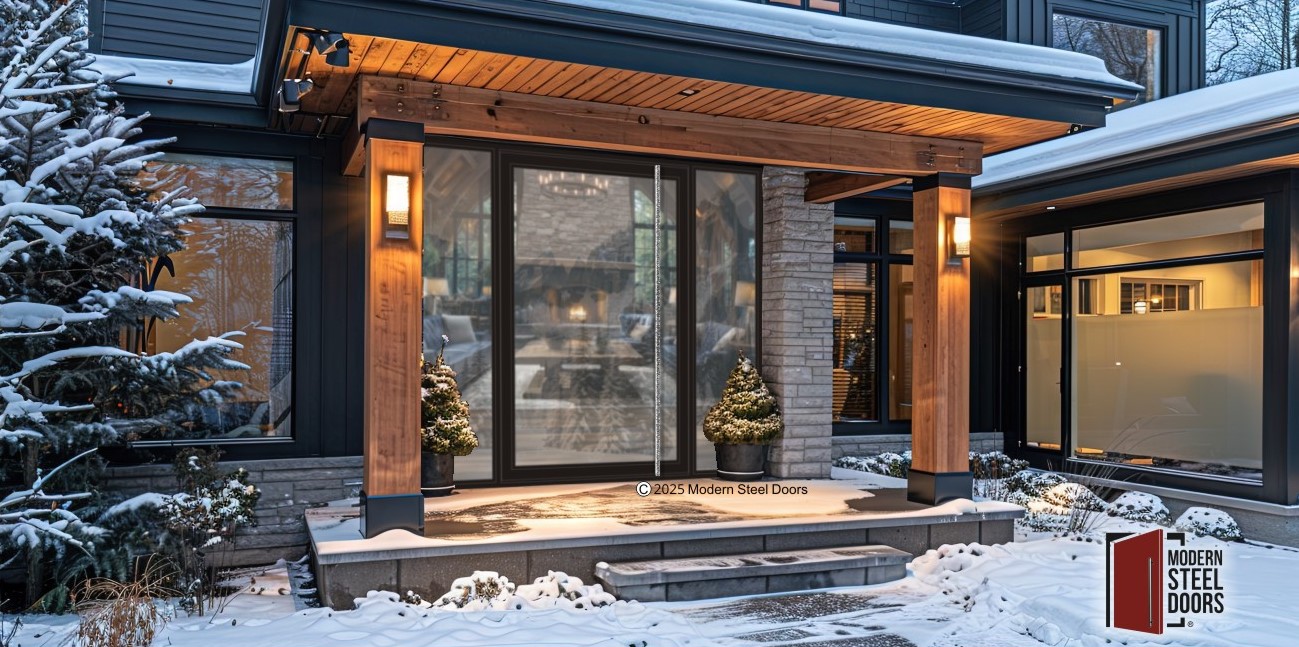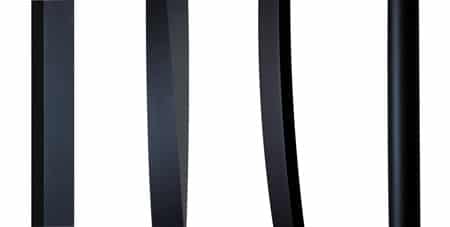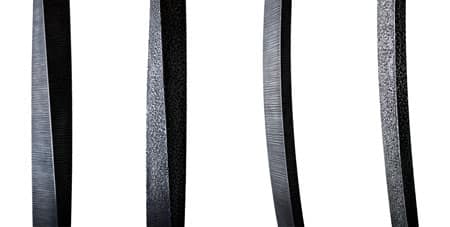Thermally Broken Doors

Warmer In The Winter & Cooler In The Summer
What Is A Thermal Break?
A thermal break minimizes heat transfer between materials, reducing both heat gain and loss.This is achieved by integrating non-conductive materials or breaking up conductive material into component parts. In construction, thermal breaks are typically used to increase a building's energy efficiency by stopping heat gain or escape via building materials like floors, walls, windows, and doors. This interruption of energy transfer means that cold spaces stay cold and hot spaces stay hot!
Advantages of Thermally Broken Doors
Energy Efficiency
Thermally broken doors require less energy to regulate their surrounding spaces. Less cooling and heating power is required to regulate the temperature inside of the home. The result is an improvement to your energy bill and the environment.
Frost Prevention
Condensation and frost are both caused by water vapor changing states, and they can be a problem in the winter. If the interior surface of the door becomes too cold, condensation can form. This can cause a wet mess within the home, damage flooring, and gradually create rust. However, thermal break doors do not entirely prevent frost on their own. A thoughtful combination of preventive and corrective architectural decisions are needed to effectively eliminate frost.
Temperature Consistency
A thermally broken door can assist with temperature consistency within the home. In the summer, the foyer can become noticeably warmer than the rest of the home. Likewise, this entry room can become overly chilly in the winter. A thermal break front door will help regulate temperature in the foyer.
Aesthetics
Limited Options
Thermally broken doors often have limited customization options, as they are typically designed with large glass panels and a minimalist aesthetic. While this classic and simple look is undeniably beautiful, it may not suit everyone’s taste, especially those seeking a more bold and distinctive design.
Design a statement entryway with thermal efficiency.

Making A Statement Entryway
Statement doors, on the other hand, are designed to make an impact, serving as a striking focal point in a home’s entryway. In particular, the front door is one of the most important and powerful spaces in a home. Thermally broken front doors by Modern Steel Doors offer substantial creative freedom when it comes to design, jamb and size.
Discover our curated collection of statement entry doors, designed to elevate any space. At Modern Steel Doors, our innovative techniques and unique designs offer unmatched creative freedom. We specialize in custom pivot doors, swing doors, and premium hardware solutions.
Which Is Better: Steel or Aluminum?
Steel Insulates Better Than Aluminum
Aluminum is a popular building material when it comes to front doors. This is due to its affordability and light weight. However, aluminum is actually more conductive than steel. This means that aluminum will allow extreme temperatures into the home to a greater degree than steel.
In the pivot door industry, aluminum is especially common. Thermal considerations aside, steel is a more premium material for creating a robust front door that is built for longevity.
Limitations of Thermal Break Doors
It is a naive misconception that thermally broken doors can be plugged in into any environment and carry 100% of the thermal responsibility. While thermally broken doors are a critical component of energy-efficient design, they cannot function as standalone solutions. In reality, effective thermal solutions require a holistic approach. Achieving optimal thermal performance involves a careful collaboration between architecture, climate familiarity, building materials, and engineering—all working in tandem to achieve thermal success. Without this comprehensive strategy, even the most advanced thermally broken door will fall short of its potential.

Architectural Considerations For Thermal Success: Prevention vs Correction
Prevention
Preventative measures are the foundation of thermal success.
Exposure Mitigation
Factors such as the positioning of the door, its setback from the exterior, and the presence of an overhang can all affect how well the door performs in terms of energy efficiency.
For instance, if the entry door is set far back from the exterior, it may be shielded from direct exposure to wind, rain, and sun, which can help mitigate heat loss or gain. A door that's recessed into the home’s façade may have the added benefit of creating a buffer zone that reduces the impact of outdoor temperature fluctuations.
Additionally, the presence of an overhang can offer extra protection against weather elements, further reducing thermal strain on the door. Shielding the door from direct sunlight in the summer or preventing rain and snow from accumulating around the entryway has a great impact on the door’s overall thermal performance.

Insulative Materials
Different building materials will be appropriate for different climates. When comparing metals, steel is generally a better insulator than aluminum. This is because steel has lower thermal conductivity, meaning it doesn’t transfer heat as easily as aluminum.
Moreover, rubber is commonly used in thermally broken products because it prevents direct contact between conductive mediums.
Thermally Broken Doors & Windows
Choosing thermally broken doors and windows is an excellent step in improving your home's insulation. The more effectively energy transfer can be interrupted, the better the overall energy efficiency of the home will be.
Correction
If insufficient preventative measures are taken, corrective measures may be needed.
Radiant Heating and Cooling
Choosing thermally broken doors and windows is an excellent step in improving your home's insulation. The more effectively energy transfer can be interrupted, the better the overall energy efficiency of the home will be.
Directed Air Flow Bath
Traditional HVAC can also be harnessed. Placing an additional air vent near the front door strategically directs airflow to assist with temperature regulation.
Conclusion
Opting for a thermally broken door is an easy decision. However, achieving a truly awe-inspiring front door experience can be more difficult. At Modern Steel Doors, we deliver both. Our statement front doors serve as the dramatic drumroll to your home, setting the stage for a memorable first impression. With Modern Steel Doors, you don’t have to compromise on style or performance.





















